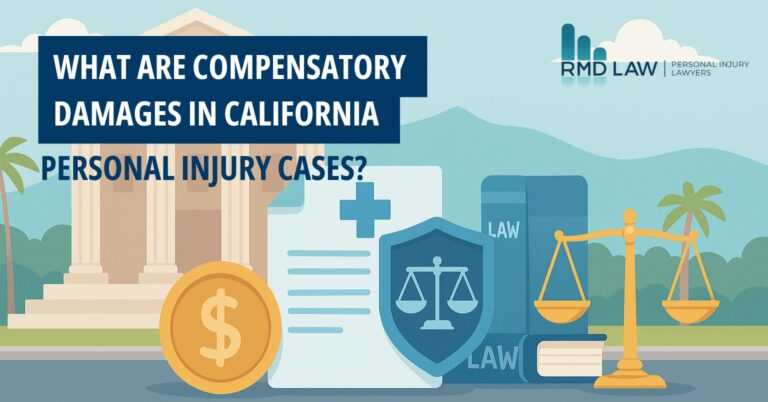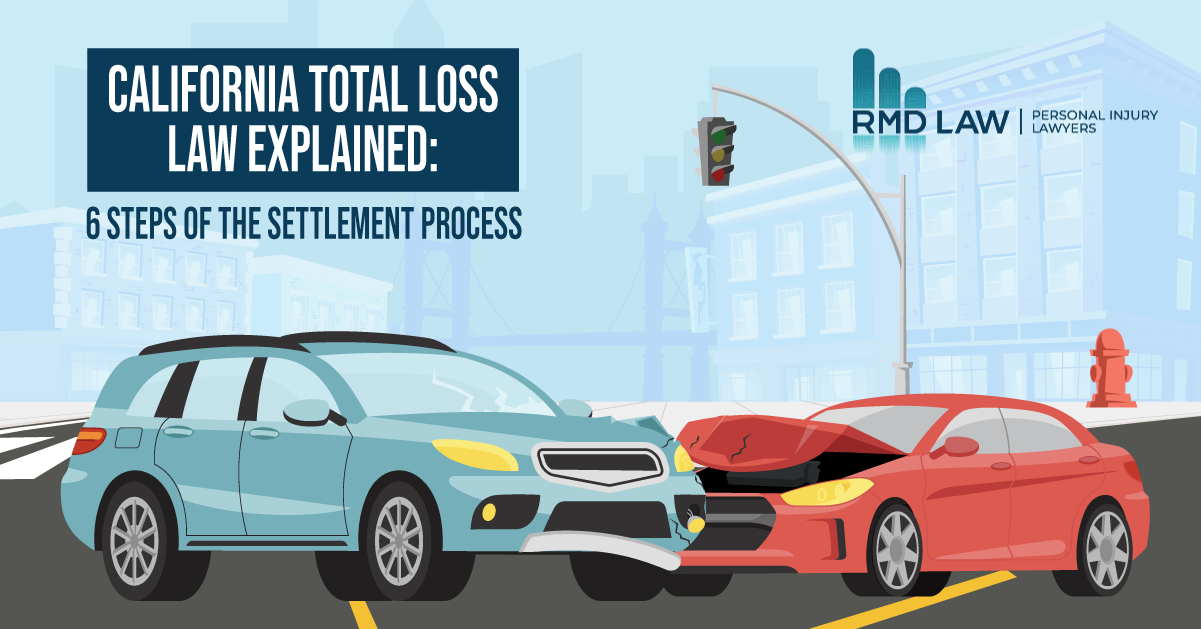
Key Takeaways
Understand how total loss settlement in California works after a crash
- Your car is declared a total loss when repair costs exceed its value, and the insurer calculates a payout based on actual cash value (ACV).
Know your rights if the settlement feels unfair
- Insurers may undervalue your car, but you can dispute the number with documentation, comparable listings, or legal help if negotiations stall.
Consider legal help when the process gets complicated
- A car accident lawyer can challenge low offers, handle delays, and make sure both your property damage and injury claims are fairly addressed.
How California Total Loss Settlements Work
One minute you’re driving your reliable car to the grocery store, then suddenly, it’s crumpled on the side of the road after a crash. The shock hits first, but soon another question follows: What happens now that your car might be a total loss?
For many drivers in California, this moment sparks confusion. Do you accept the insurer’s number? How do you know if the payout is fair? The rules and paperwork can feel overwhelming.
This guide breaks down the process step by step, so you understand the California total loss law, the settlement, and how to protect yourself along the way.
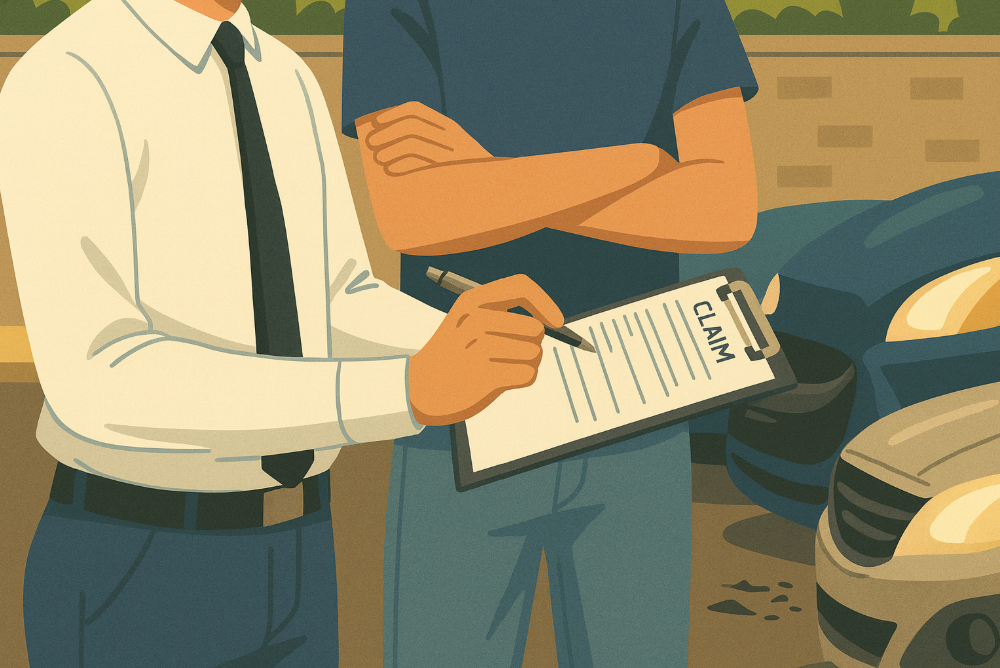
Step-By-Step: The Total Loss Settlement Process in California
When your car is declared a total loss, the settlement process usually follows a predictable path. Knowing what to expect helps you avoid surprises and spot red flags along the way.
1. An accident happens, and the vehicle is inspected
Your insurance company will send an adjuster to inspect the damage after a crash. Their job is to decide if the car can be repaired or if fixing it costs more than the vehicle’s value. For example, if your ten-year-old sedan needs $12,000 in repairs but is only worth $9,000, it is headed for a total loss determination.
What many drivers don’t realize is that adjusters follow internal company guidelines. Some insurers may use a percentage threshold, like declaring a total loss if repairs exceed 70 or 80 percent of the car’s value. Others focus heavily on safety concerns, such as when the frame is bent or airbags have deployed. Pay close attention to how the adjuster explains their decision. If something sounds vague, ask questions immediately.
2. You receive a total loss determination
If the adjuster decides the car is not worth repairing, you will get an official notice that it is a total loss. This usually happens when there is major frame damage, multiple airbag deployments, or water intrusion that makes the vehicle unsafe. Once this decision is made, the claim shifts toward a payout instead of repairs.
A red flag to watch out for is inconsistent communication. If one representative tells you the car might be fixable but another declares it a loss without much explanation, request the documentation in writing. Insurance companies must provide details on how they reached that conclusion.
3. You get a settlement offer based on ACV
Your settlement is based on the car’s actual cash value (ACV) before the crash. Insurers look at sources like Kelley Blue Book, local market listings, and depreciation to estimate what buyers would have paid for your car in its pre-accident condition.
This sounds straightforward, but many drivers are shocked when the number is lower than expected. For instance, if you recently replaced your tires, installed a new sound system, or kept up with meticulous maintenance, the insurer’s report may not reflect those upgrades. Be cautious here because lowball offers happen.
If the number feels unfair, you can ask for supporting documentation, point out recent upgrades, or even get your own appraisal to strengthen negotiations. This is the point where total loss settlement in California comes into play, because understanding this calculation is critical to your final payout.
4. Lienholder or finance company gets paid first
If you still owe money on your car loan or lease, the insurance company pays the lender before sending anything to you. That can be frustrating if the payout barely covers the balance, leaving you without a car and without equity. Gap insurance can help fill this gap, but many drivers do not realize they need it until after the fact.
Here’s an example: say you bought a new SUV for $40,000 last year and still owe $35,000. After the crash, the insurer values the SUV at $30,000. That means the lender gets paid in full, but you’re left with nothing and still owe $5,000 on a vehicle you no longer have. Without gap coverage, you’re stuck paying off that balance while figuring out how to afford another car.
5. You transfer the title and hand over the car
To complete the process, you will sign over your car’s title to the insurer and, in some cases, surrender your license plates. The vehicle may be branded with a salvage title, which means that if it is ever repaired and resold, the history follows it. For you, the process usually ends here since you no longer own the car once the paperwork is done.
If you want to keep the car, some insurers allow you to “buy back” the totaled vehicle at its salvage value. This option can make sense if the damage is cosmetic or you have the means to repair it privately, but it will affect the title and future resale value.
6. You accept the offer or dispute the valuation
You do not have to accept the first number you are offered. If you think your car was undervalued, you can request a detailed report, highlight comparable vehicles for sale in your area, request more evidence, or even hire an independent appraiser.
Say your insurer values your compact car at $8,000, but three similar models in your neighborhood are selling for closer to $10,000. Bringing those listings to the table strengthens your argument. If negotiations stall, involving an attorney can help level the playing field. Insurance companies count on you settling quickly, but you have every right to push back until you receive a fair amount.
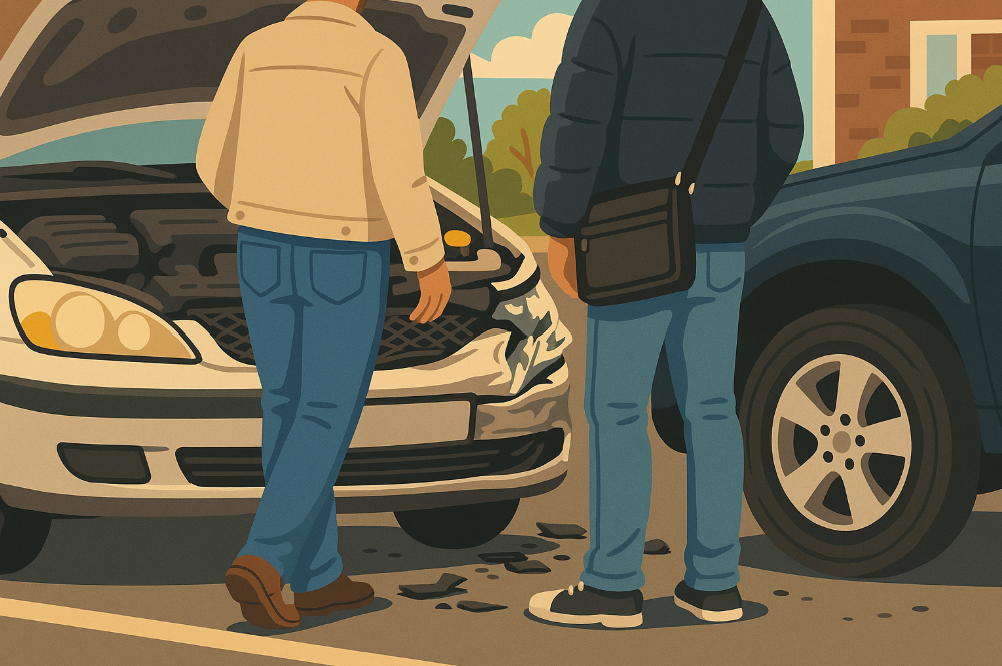
When to Call a Personal Injury or Property Damage Lawyer
Many drivers assume the insurance company will take care of everything after a total loss. In reality, there are moments when legal help can make all the difference. Here are clear signs it is time to bring in an attorney:
You were injured in the crash
Medical bills, lost wages, and long-term recovery go far beyond the value of your car. An attorney can help you recover damages for both your property and your personal well-being. If you focus only on the car’s payout, you risk leaving significant compensation on the table.
The insurer’s payout offer seems too low
If the number does not reflect your car’s actual market value, a lawyer can step in to challenge the calculation and demand fair compensation. Lawyers understand the methods insurers use and can point out inconsistencies you might miss.
You just bought or recently upgraded your car
New purchases and upgrades like navigation systems, aftermarket safety features, or specialized wheels often do not appear in the insurer’s initial valuation. A lawyer can help you gather receipts and records that prove the true worth of your vehicle.
Your claim is being delayed or denied
Unexplained delays or outright denials are tactics insurers sometimes use to pressure drivers into settling. With legal representation, you gain leverage. A lawyer can escalate your claim, set firm deadlines, and hold the company accountable for unnecessary stalling.
You want to dispute the total loss decision
Sometimes a car is worth saving, or the valuation feels far off from reality. A lawyer can help request a second opinion, challenge the insurer’s calculations, and even involve third-party experts if needed.
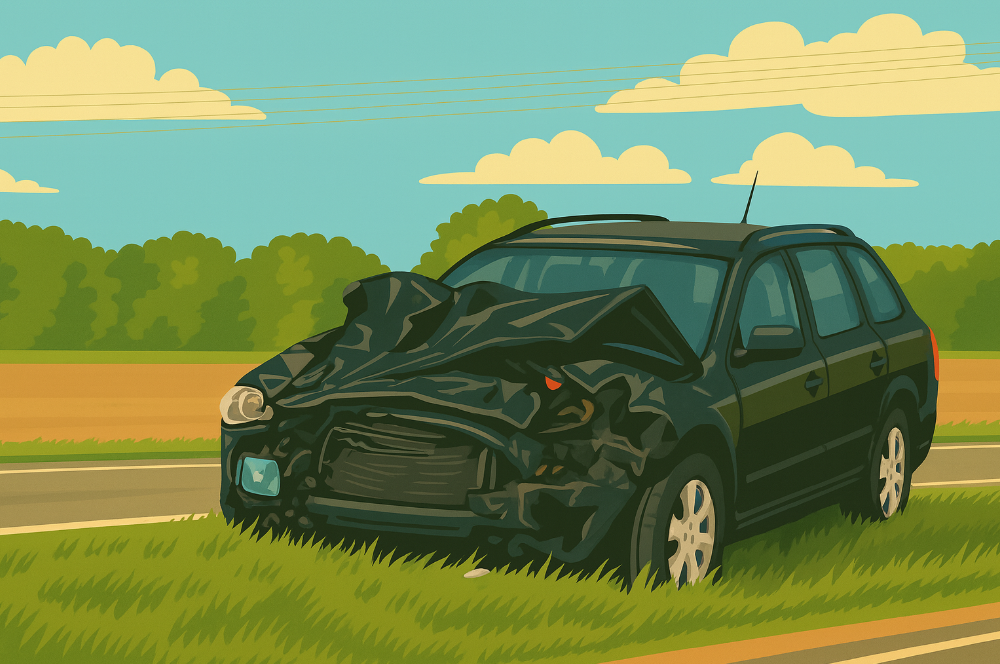
Steer Toward a Fair Outcome
Total loss claims in California can feel like a maze with valuations, negotiations, and lender payoffs all happening at once. But remember, you do not have to accept the first number the insurer puts in front of you. Knowing your rights, asking questions, and pushing back if needed can make the difference between a fair settlement and walking away shortchanged.
When the process gets complicated, it helps to have an advocate who knows how to deal with insurance companies. Working with a car accident lawyer gives you leverage to challenge low offers and keep your focus on recovery.
If your car was declared a total loss after a crash in California and you are unsure of the next step, RMD Law is here to guide you. Our team has handled countless claims, from property damage disputes to injury cases, and we know what it takes to secure fair outcomes.
Contact us today for a free case evaluation.
FAQs
A total loss settlement in California happens when your insurance company decides repairs cost more than your car’s value. Instead of fixing it, they pay you based on its actual cash value (ACV).
Insurers use actual cash value (ACV), which factors in age, mileage, condition, and local market prices. They may reference Kelley Blue Book or similar resources, but you can dispute the number with your own evidence.
If you have a loan or lease, the lienholder or finance company gets paid first from the settlement. Only the leftover balance, if any, goes to you. This is why gap insurance can be crucial if you owe more than the car’s value.
Yes, but it will carry a salvage title. You’ll usually need to buy it back from the insurer at its salvage value, and future resale will be significantly affected.
Contacting a lawyer makes sense if you’re injured, your claim is delayed or denied, or you believe the settlement offer is too low. A car accident lawyer in California can protect your rights and negotiate for fair compensation.
- 7 Most Dangerous Roads in California for Pedestrians - December 19, 2025
- Reckless Driving in California: Definition, Penalties, and Real-World Consequences - December 15, 2025
- How Cities Like Los Angeles and San Francisco Use Enhanced Crosswalk Paint to Improve Safety - December 11, 2025

